Polish cuisine is well-known for its hearty and comforting dishes, and one of the most beloved is the traditional pierogi. These delicious dumplings can be filled with a wide array of savory or sweet fillings and are perfect for any occasion – from a cozy dinner at home to a festive holiday feast.
While store-bought pierogi are easy to find in most grocery stores, making them from scratch is a rewarding experience that allows you to customize the filling and savor this classic dish’s authentic taste.
How to Make Traditional Polish Pierogi? We will take you through making traditional Polish pierogi from scratch, including tips and tricks to ensure that your pierogi turn out perfectly every time. We’ll start with the dough, which is the foundation of any good pierogi, and then move on to the filling, which can be made with potato, cheese, mushroom, sauerkraut, or fruit.
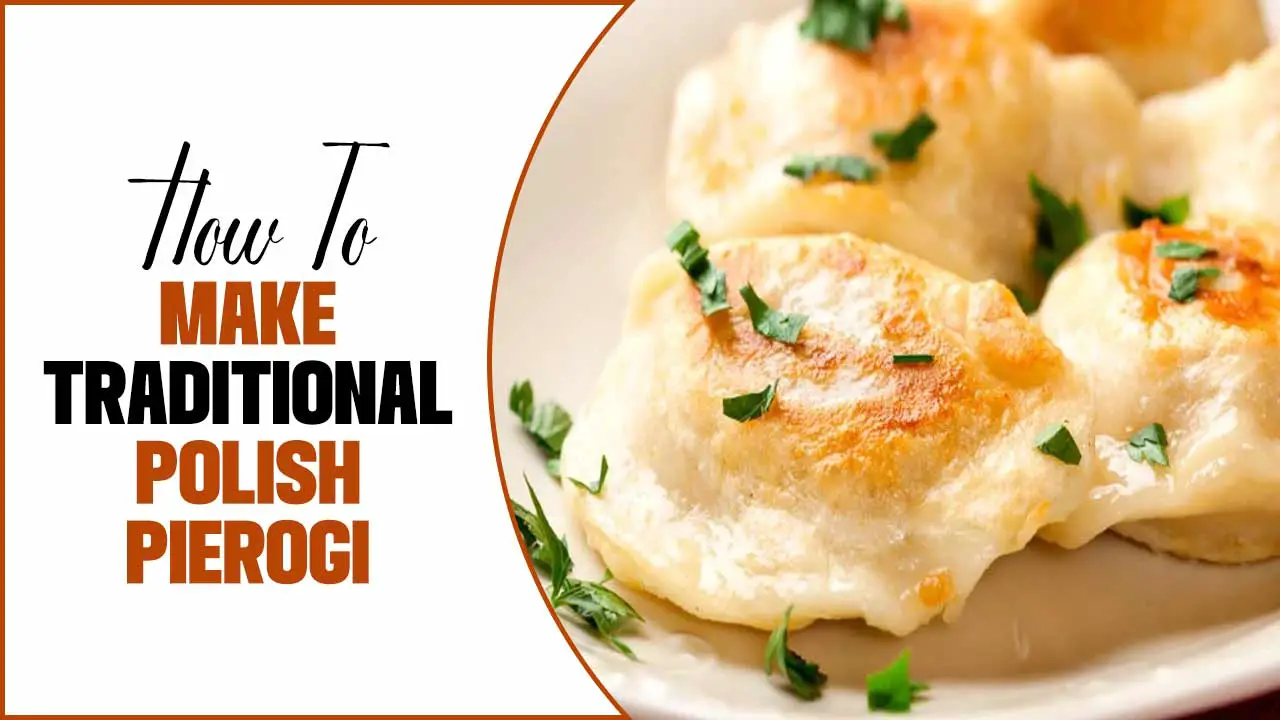
Different Types Of Pierogi
When it comes to making traditional Polish pierogi, there are many different types. Each type has a unique filling, giving you many options to satisfy your taste buds. Allowing you to customize your pierogi experience. There are a variety of delicious options to choose from. Some popular types of pierogi include:
- Potato and cheese: This classic filling combines creamy mashed potatoes with tangy cheese, creating a rich and comforting pierogi.
- Sauerkraut and mushroom: For a savory and earthy flavor, try filling your pierogi with sauerkraut and mushrooms. Combining the tangy sauerkraut and the meaty mushrooms adds depth to each bite.
- Meat: If you want a heartier option, consider filling your pierogi with ground meat such as pork or beef. People often season this filling with herbs and spices for added flavor.
- Fruit: While not as common as savory fillings, fruit-filled pierogi can be a delightful treat. Fillings like blueberries or cherries provide a sweet flavor that pairs well with a dollop of sour cream.
How To Make Traditional Polish Pierogi – Easy Recipe
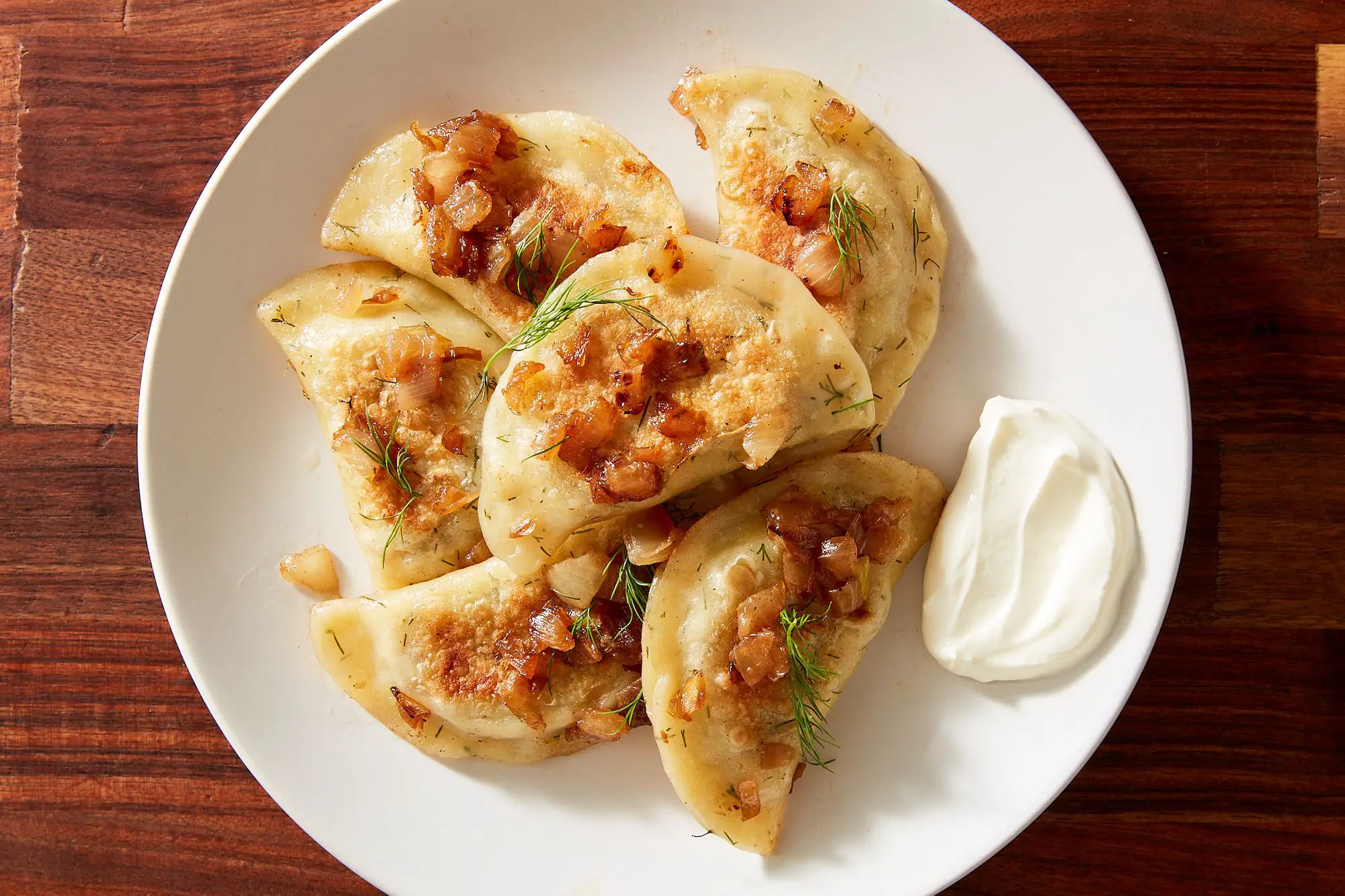
Making traditional Polish pierogi is easier than you might think! Here’s a simple recipe to help you recreate this beloved dish in your kitchen. Making traditional Polish pierogi can be a fun and delicious culinary adventure.
While the process may initially seem intimidating, there are easy ways to make these delectable dumplings right in your kitchen. How to Make Traditional Polish Pierogi Here are some easy ways to help you create authentic Polish pierogi:
Ingredients And Equipment Needed
Traditional Polish pierogi are a beloved dish that people of all ages can enjoy. You will need a few key ingredients and equipment to make traditional Polish pierogi. By gathering these ingredients and equipment, you will be well on your way to creating delicious and authentic Polish pierogi in your kitchen. Here’s what you’ll need:
Ingredients:
- All-purpose flour
- Eggs
- Salt
- Water
- Your choice of filling (common options include potato and cheese, sauerkraut and mushroom, or meat).
Equipment:
- Mixing bowl
- Rolling pin
- Pierogi cutter or circular cookie cutter
- Filling spoon or tablespoon
- Large pot for boiling the pierogi
Once you have gathered your ingredients and equipment, you’ll be ready to start making your delicious homemade pierogi.
Making The Dough
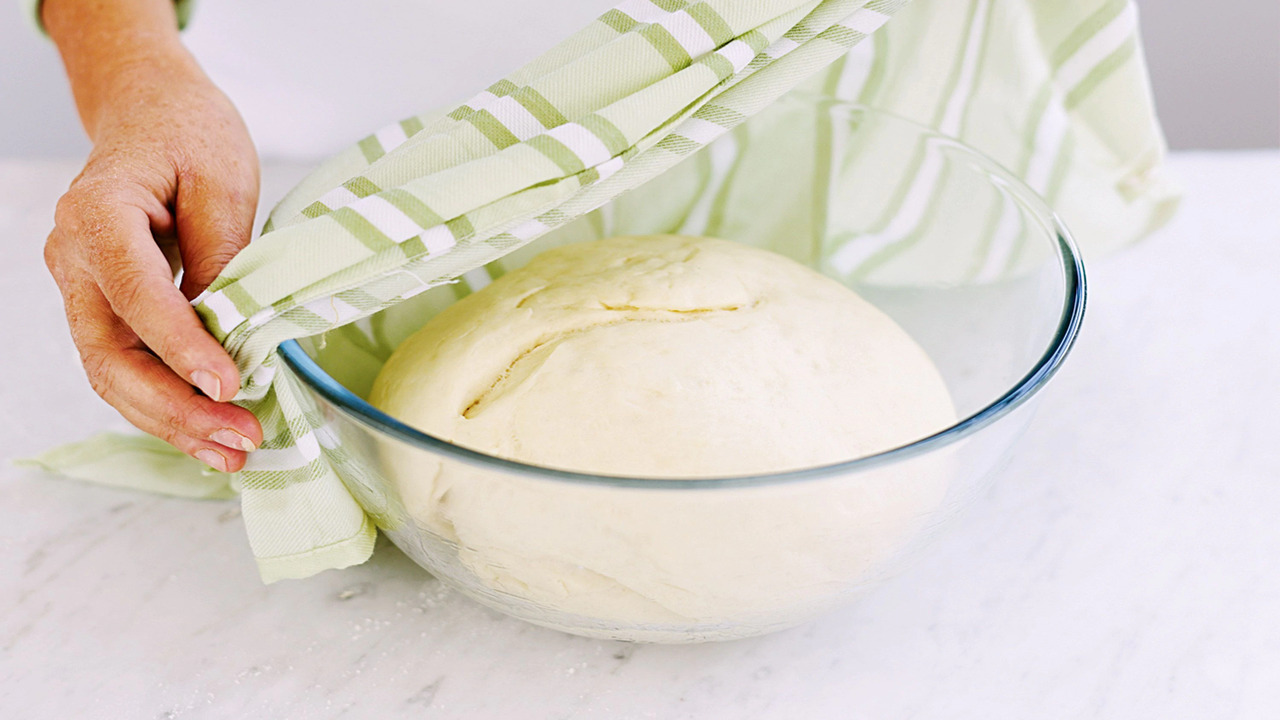
Making the dough is a crucial step in making traditional Polish pierogi. The dough is the foundation for these delicious dumplings and can significantly affect their texture and taste. To make the perfect pierogi dough, you will need a few basic ingredients: flour, water, eggs, and salt.
Start by combining the flour and salt in a large mixing bowl, then create a well in the center. In a separate bowl, whisk together the water and eggs before pouring them into the well of the flour mixture.
Use your hands or a wooden spoon to gradually incorporate the wet and dry ingredients until a soft dough forms. Knead the dough on a floured surface for several minutes until it becomes smooth and elastic.
Once your dough is ready, cover it with a clean kitchen towel and let it rest for about 30 minutes to allow the gluten to relax. Now you’re ready to roll out your dough and start filling those pierogi with your favorite fillings.
Preparing The Filling
Preparing the filling is a crucial step in making traditional Polish pierogi. There are countless delicious fillings, but some popular options include potato and cheese, sauerkraut and mushroom, and meat. To prepare the filling, start by cooking any ingredients that need to be cooked, such as potatoes or mushrooms.
Once cooked, mash or finely chop the ingredients and mix them together with any seasonings or cheeses you desire. Tasting the filling is essential to ensure it has the right flavors. Once your filling is ready, you can shape and cook the pierogi.
Assembling The Pierogi
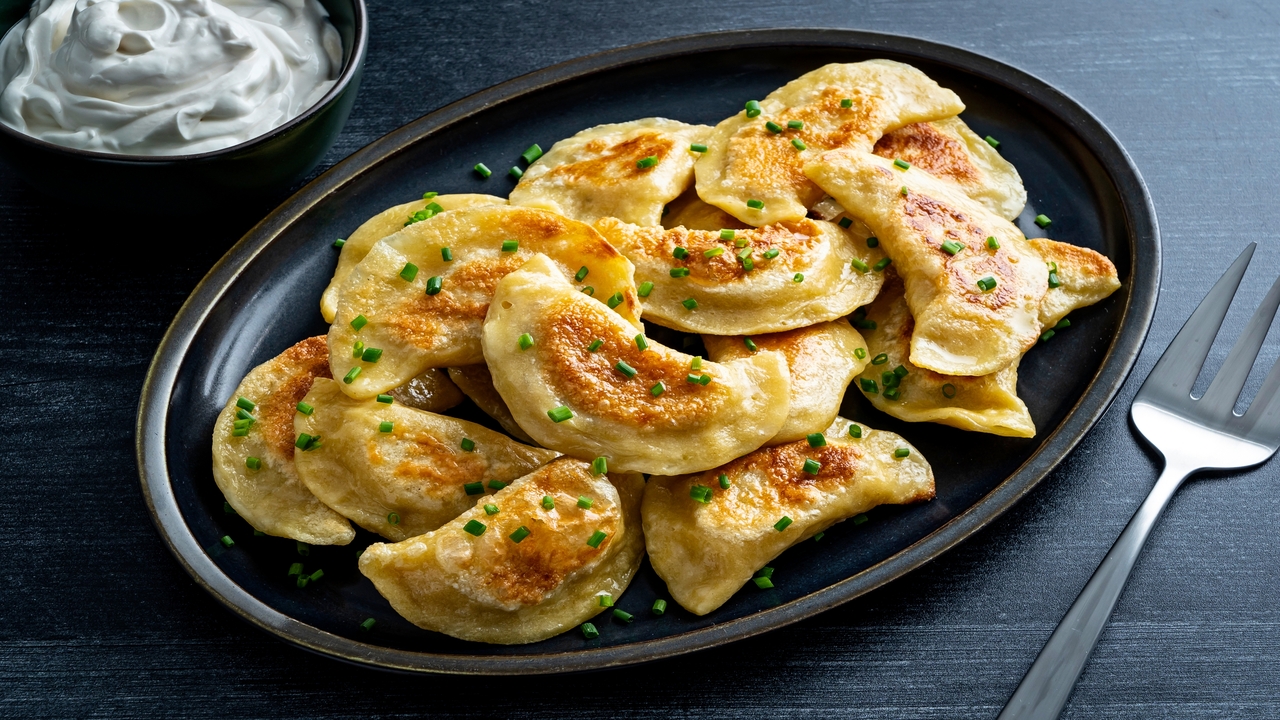
To assemble the delicious Polish pierogi, start by rolling out the dough on a lightly floured surface, ensuring the desired thickness. Use a round cookie cutter or a glass to cut the dough into perfect circles.
Afterward, place a spoonful of your favorite filling, such as potato and cheese or sauerkraut and mushroom, in the center of each dough circle. Gently fold the dough over the filling, creating a mouthwatering half-moon shape. Press the edges together firmly to secure the filling, ensuring a perfect seal.
When it comes to cooking the pierogi, boil them in salted water until they float to the surface, which usually takes just a few minutes. For extra flavor, fry the boiled pierogi in butter until they turn a delicious golden brown. Lastly, serve your homemade Polish pierogi hot with a generous dollop of sour cream or your preferred dipping sauce.
Cooking The Pierogi
Cooking the pierogi is the final step in making traditional Polish pierogi. Once you have filled and sealed your pierogi, it’s time to boil them. Fill a large pot with water and bring it to a boil. Carefully drop the pierogi into the boiling water, not to overcrowd the pot.
Cook the pierogi for about 3-5 minutes or until they float to the surface. Use a slotted spoon to remove the cooked pierogi from the water and transfer them to a plate or serving dish.
You can serve them as is or give them some additional flavor by sautéing them in butter or frying them until they are golden brown. Whichever method you choose, serve your homemade pierogi hot and enjoy this delicious Polish delicacy.
Serving And Enjoying Pierogi
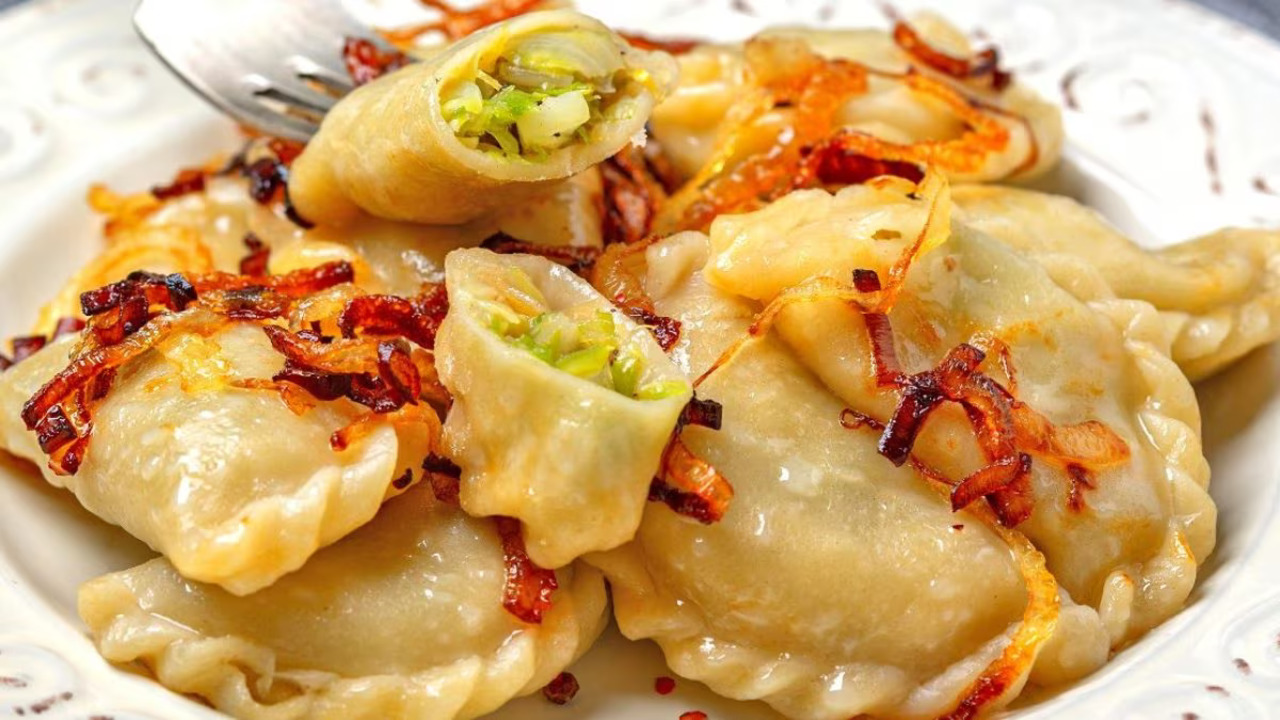
Pierogi, a beloved Polish dish, can be enjoyed in various ways, making them a versatile and satisfying culinary delight. These delicious dumplings, filled with an array of savory or sweet fillings, can be served as a main dish, a side dish, or even as an appetizer.
To savor the authentic flavors, traditionally, they are served with a dollop of creamy sour cream and a generous topping of fried onions, which enhance their taste and add a delightful texture.
However, the options for serving pierogi are endless. You can opt for a drizzle of melted butter to elevate the richness, sprinkle some crispy bacon bits for a savory twist, or add a hint of freshness with a garnish of aromatic herbs.
The choice is yours! Whether you prefer piping hot pierogi or chilled ones, their outstanding flavors will tantalize your taste buds. Don’t let any leftovers go to waste! Simply boil them for a few minutes or give them a pan-fried treatment with a knob of butter, resulting in a deliciously crispy exterior.
Conclusion
How to Make Traditional Polish Pierogi? Making traditional Polish pierogi is a delightful and rewarding culinary experience. Whether you’re a seasoned cook or just starting in the kitchen, following this step will help you create delicious pierogi that your family and friends will love.
Every step is important in creating the perfect pierogi, from choosing the right ingredients to mastering the art of dough-making and filling preparation. Don’t forget to experiment with different fillings and get creative with your toppings.
Whether you’re making them for a family gathering or a cozy night in, the effort put into making pierogi will be well worth the final result. With practice, you’ll soon be able to master this classic dish and impress your guests with your culinary skills.
Frequently Asked Questions
1.How Are Pierogies Traditionally Made?
Ans: Pierogies are made by rolling out dough, cutting it into circles, and filling them. They fold the filled dough in half and seal it before boiling until it floats to the surface. Traditionally served with melted butter and sautéed onions.
2.What Is Traditional Pierogi Dough Made Of?
Ans: People often season this filling with herbs and spices for added flavor. Some recipes may incorporate sour cream or milk for a richer taste. Roll out the dough thinly and cut it into circles to enclose the filling, after kneading it until it becomes smooth and elastic.
3.What Is The Most Traditional Pierogi?
Ans: The classic and most traditional pierogi filling is typically a combination of potato and cheese. Other popular fillings include sauerkraut and mushroom, as well as meat. Sweet fillings like fruit preserves or cheese are common in traditional pierogi. People typically make the dough for these pierogi with flour, water, eggs, and occasionally sour cream.
4.What Is The Traditional Food Of Poland Pierogi?
Ans: Pierogi is a beloved traditional Polish dish featuring dumplings filled with various ingredients. Popular fillings include potato and cheese, sauerkraut and mushroom, and meat. Pierogi can be prepared by boiling, baking, or frying. The dough is typically made from flour, water, eggs, and occasionally sour cream.
5.What Are The Main Ingredients Needed To Make Traditional Polish Pierogi?
Ans: The main ingredients for traditional Polish pierogi include flour, eggs, water, and salt for the dough. Common fillings consist of potatoes, cheese, onions, and sauerkraut, with options for meat or fruit. Sour cream and butter are popular accompaniments to pierogi.

I’m a writer and blogger who loves to talk about entertainment, culture, and relationships. I love to share my thoughts and insights on these topics, and I’m always looking for new ways to engage with my readers. I’m also a big fan of learning new things, so I’m always exploring new areas of interest.
